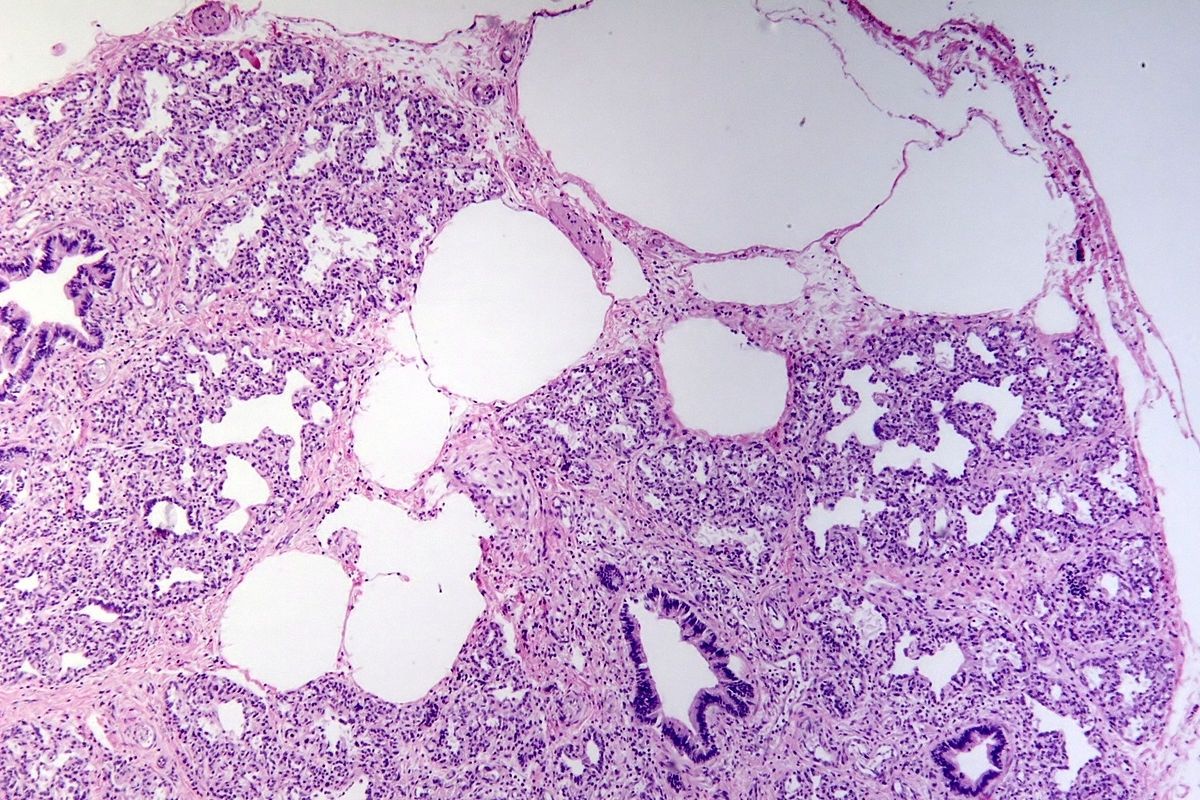
Pulmonary Lymphangiomatosis is a rare, complex disease that affects the lungs and lymphatic system. Characterized by an abnormal growth of lymphatic vessels, it can lead to breathing difficulties, chest pain, and other serious symptoms. This condition often goes undiagnosed due to its rarity and the similarity of its symptoms to other respiratory diseases. Understanding Pulmonary Lymphangiomatosis is crucial for early detection and effective management. In this post, we will explore 30 essential facts about this condition, shedding light on its causes, symptoms, diagnosis, and treatment options. Whether you're a patient, caregiver, or simply curious, these insights will provide valuable knowledge about Pulmonary Lymphangiomatosis.
Key Takeaways:
- Pulmonary Lymphangiomatosis is a rare lung disease with no known cure, causing breathing difficulties and chest pain. Early diagnosis and symptom management are crucial for improving quality of life.
- Ongoing research and collaboration aim to better understand and treat Pulmonary Lymphangiomatosis. Patients can find support through rehabilitation programs, online communities, and open communication with healthcare providers.
What is Pulmonary Lymphangiomatosis?
Pulmonary Lymphangiomatosis is a rare disease that affects the lymphatic system in the lungs. It can cause a variety of symptoms and complications. Here are some intriguing facts about this condition.
-
Pulmonary Lymphangiomatosis is a rare disorder characterized by the abnormal growth of lymphatic vessels in the lungs.
-
This condition primarily affects children and young adults, although it can occur at any age.
-
The exact cause of Pulmonary Lymphangiomatosis remains unknown, making it a challenging condition to diagnose and treat.
-
Symptoms often include difficulty breathing, chronic cough, and chest pain.
-
Pulmonary Lymphangiomatosis can lead to pleural effusion, which is the buildup of fluid around the lungs.
Diagnosis and Symptoms
Diagnosing Pulmonary Lymphangiomatosis can be tricky due to its rarity and the overlap of symptoms with other lung diseases. Here are some key points about its diagnosis and symptoms.
-
A chest X-ray or CT scan is often the first step in diagnosing Pulmonary Lymphangiomatosis.
-
Lung biopsy may be required to confirm the diagnosis, as imaging alone is not always conclusive.
-
Pulmonary function tests can help assess the extent of lung involvement.
-
Symptoms can mimic those of asthma or chronic bronchitis, leading to potential misdiagnosis.
-
Fatigue and weight loss are common symptoms that can accompany respiratory issues.
Treatment Options
Treating Pulmonary Lymphangiomatosis involves managing symptoms and slowing disease progression. Here are some treatment facts.
-
There is no cure for Pulmonary Lymphangiomatosis, so treatment focuses on symptom management.
-
Corticosteroids may be prescribed to reduce inflammation and slow the growth of lymphatic vessels.
-
Sirolimus, an immunosuppressant, has shown promise in treating this condition by inhibiting lymphatic vessel growth.
-
Oxygen therapy can help alleviate breathing difficulties in severe cases.
-
In some instances, surgical intervention may be necessary to remove excess lymphatic tissue.
Complications and Prognosis
Living with Pulmonary Lymphangiomatosis can be challenging due to potential complications. Here are some important facts about its complications and prognosis.
-
Pulmonary Lymphangiomatosis can lead to respiratory failure if not properly managed.
-
The disease can also cause chylothorax, a condition where lymphatic fluid accumulates in the chest cavity.
-
Regular monitoring and follow-up with a healthcare provider are crucial for managing the disease.
-
The prognosis varies widely among individuals, with some experiencing stable disease and others facing rapid progression.
-
Early diagnosis and intervention can improve the quality of life for those affected by Pulmonary Lymphangiomatosis.
Research and Future Directions
Ongoing research aims to better understand Pulmonary Lymphangiomatosis and develop more effective treatments. Here are some facts about current research and future directions.
-
Researchers are investigating the genetic factors that may contribute to the development of Pulmonary Lymphangiomatosis.
-
Clinical trials are exploring new medications and therapies to manage the disease more effectively.
-
Advances in imaging technology are helping doctors diagnose the condition earlier and more accurately.
-
Patient registries and databases are being established to collect data and improve our understanding of the disease.
-
Collaboration between researchers, clinicians, and patient advocacy groups is essential for advancing Pulmonary Lymphangiomatosis research.
Living with Pulmonary Lymphangiomatosis
Managing daily life with Pulmonary Lymphangiomatosis requires adjustments and support. Here are some facts about living with the condition.
-
Pulmonary rehabilitation programs can help improve lung function and overall fitness.
-
Support groups and online communities provide valuable resources and emotional support for patients and their families.
-
A balanced diet and regular exercise can help maintain overall health and well-being.
-
Patients may need to avoid certain activities or environments that can exacerbate symptoms, such as high altitudes or polluted areas.
-
Open communication with healthcare providers is crucial for managing the disease and addressing any concerns or complications.
Final Thoughts on Pulmonary Lymphangiomatosis
Pulmonary Lymphangiomatosis, though rare, is a serious condition affecting the lymphatic system and lungs. Understanding its symptoms, such as shortness of breath, chest pain, and fatigue, can lead to earlier diagnosis and better management. Treatment options vary from medication to surgery, depending on the severity.
Raising awareness about this disease is crucial for early detection and support for those affected. Medical advancements continue to improve the quality of life for patients. If you or someone you know shows symptoms, seeking medical advice promptly is essential.
Knowledge empowers us to take proactive steps in health management. Stay informed, support research, and spread awareness. Pulmonary Lymphangiomatosis may be rare, but with the right information and support, those affected can lead better lives.
Frequently Asked Questions
Was this page helpful?
Our commitment to delivering trustworthy and engaging content is at the heart of what we do. Each fact on our site is contributed by real users like you, bringing a wealth of diverse insights and information. To ensure the highest standards of accuracy and reliability, our dedicated editors meticulously review each submission. This process guarantees that the facts we share are not only fascinating but also credible. Trust in our commitment to quality and authenticity as you explore and learn with us.
